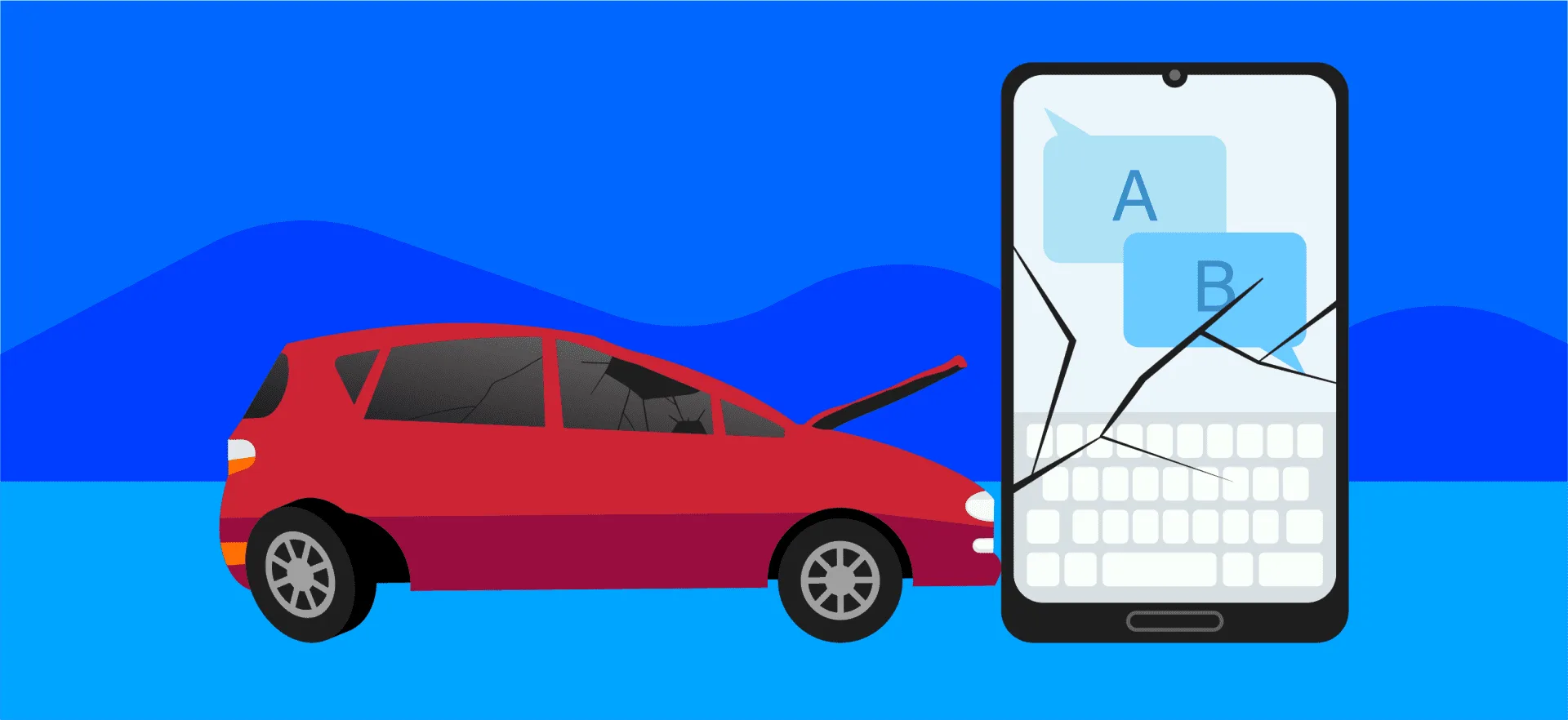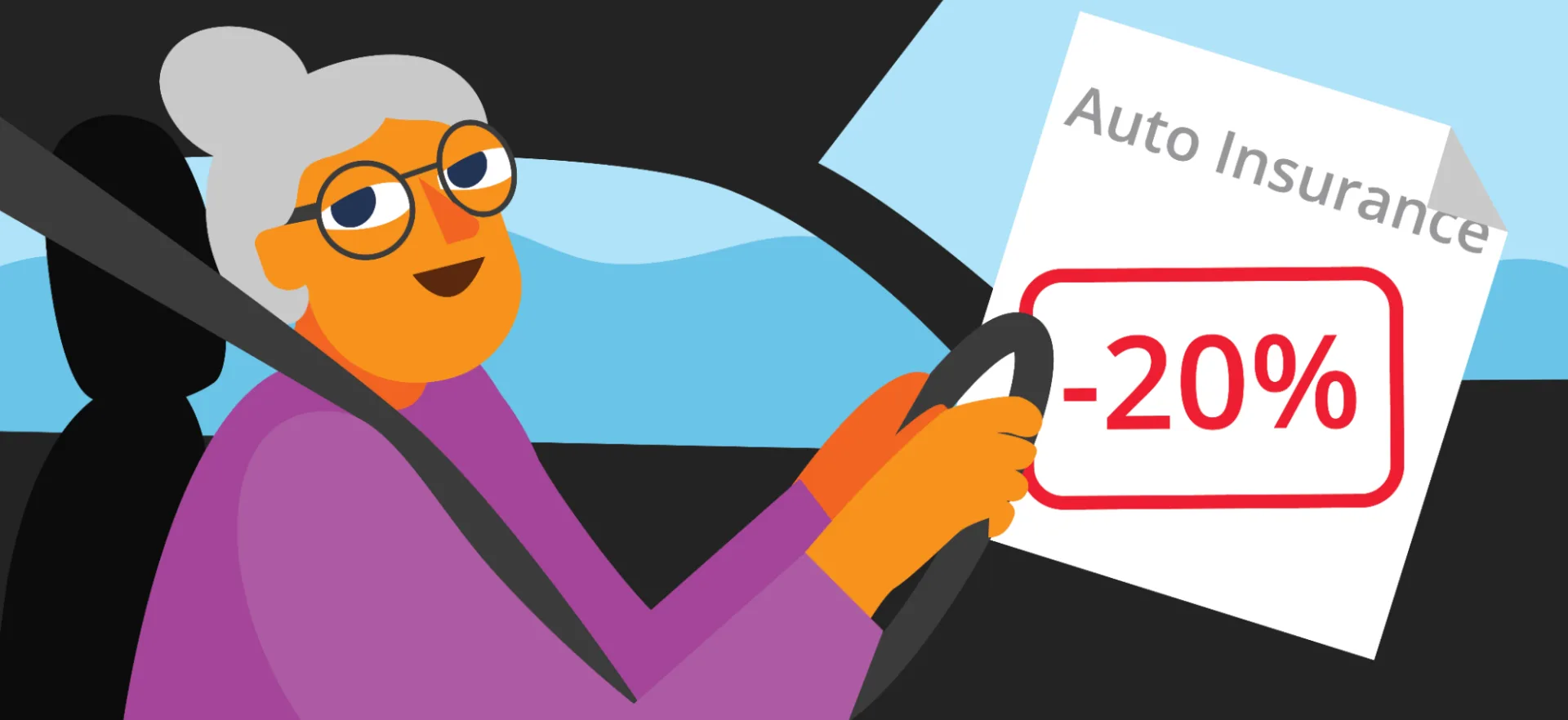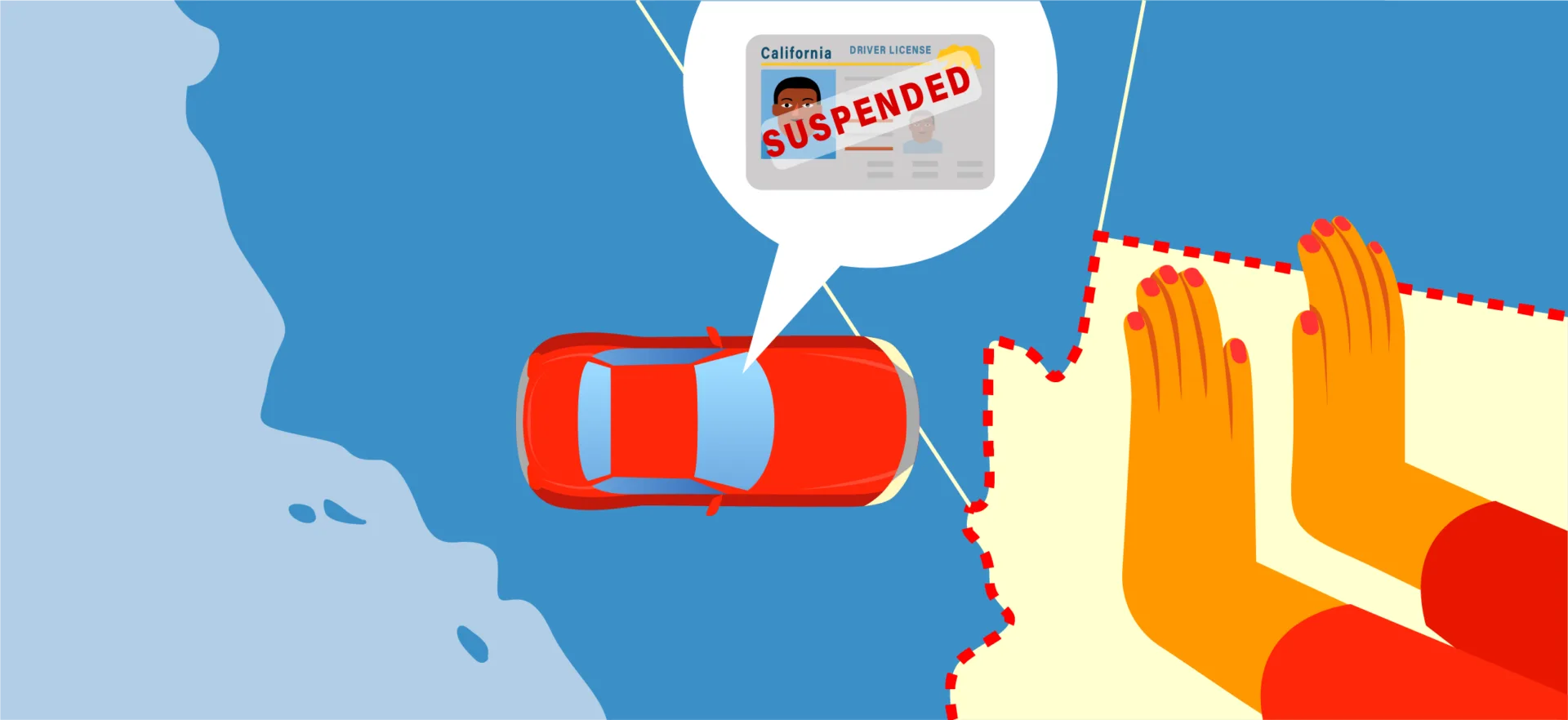Most drivers and pedestrians have experienced a moment of uncertainty at a crosswalk. Who goes first? When is it your turn? The answer comes from California Vehicle Code (CVC) 21950, or the “Failure to Yield to a Pedestrian” law.
Under 21950 CVC, drivers must give pedestrians the right of way within any marked or unmarked crosswalks at intersections. Pedestrians, on the other hand, must pay attention to the road and their surroundings when crossing the street.
As a driver, violating this law can result in fines and points on your driving record. Here’s what you should know about it.
What Is CVC 21950?
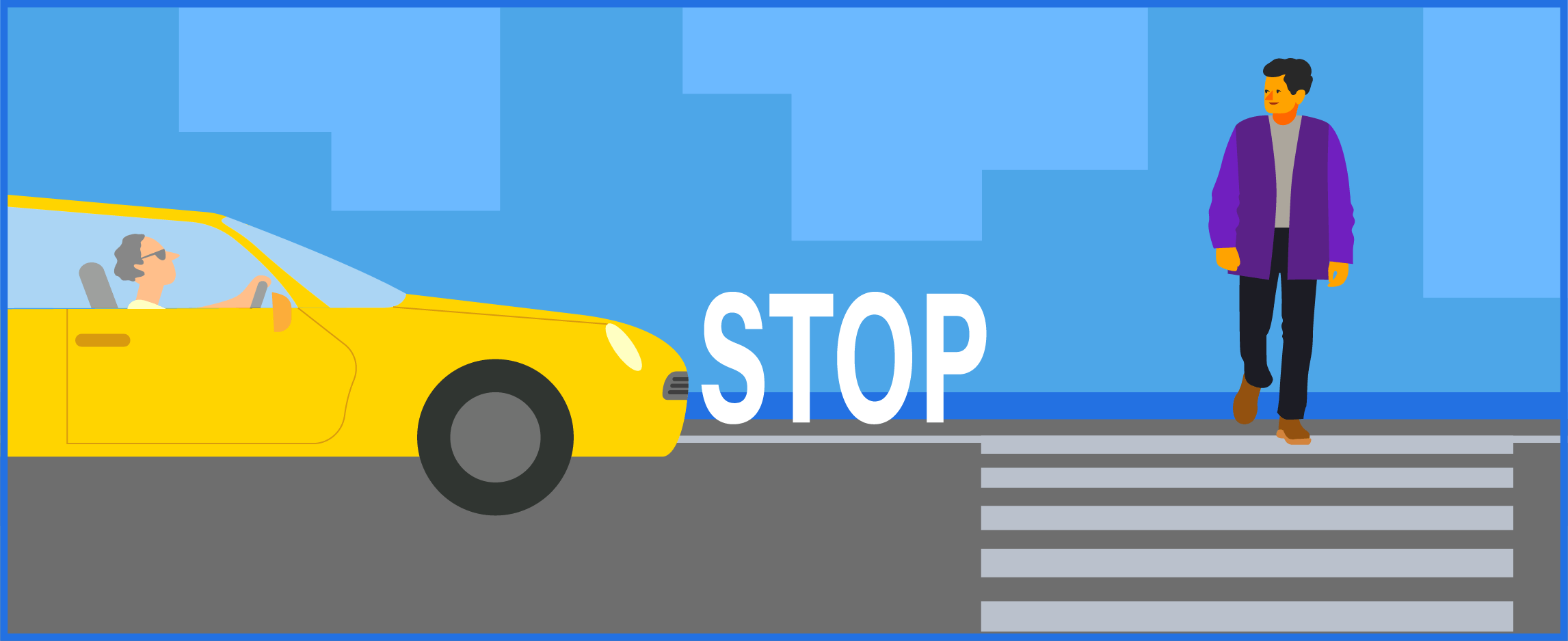
CVC 21950 is a traffic statute that regulates pedestrians’s rights and duties at crosswalks. Since the road is a shared space, this law has direct implications for drivers.
Below is a quick breakdown of its five sections:
- Section (a): Pedestrians have the right-of-way at marked and unmarked crosswalks at intersections. Therefore, drivers must allow them to cross the street safely.
- Section (b): Pedestrians must exercise due care at crosswalks. For example, they shouldn’t suddenly leave a curb or run in front of a car that doesn’t have time to stop. Also, they must keep walking and not block traffic while crossing the street.
- Section (c): When a pedestrian is in a crosswalk, drivers must slow down or stop completely if necessary.
- Section (d): No matter the circumstances, drivers must take preventative measures to avoid endangering pedestrians’ safety at crosswalks. You should slow down and be prepared to stop if someone steps into a marked crosswalk while you are approaching an intersection.
- Section (e): Peace officers may not stop a pedestrian for breaking these rules unless there’s an immediate risk of a crash with a moving vehicle. Both drivers and pedestrians must exercise caution at crosswalks.
Traffic school can help you keep a clean driving record, prevent insurance increases, and more!
Common Violations of CVC 21950

These rules look simple on paper but can prove tricky in real-life traffic situations, even for experienced drivers.
With that in mind, here are some common violations of CVC 21950:
- Failing to Stop for Pedestrians at a Crosswalk: Even if you’re driving at rush hour, you must still let pedestrians cross the street. Slow down ahead of time and stop completely if necessary. Failure to do so can lead to an accident, especially at blind intersections where visibility is limited.
- Passing a Vehicle That Has Stopped for a Pedestrian: If a vehicle stops at a crosswalk to allow a pedestrian to cross, you may not pass that vehicle.
- Failing to Yield to Pedestrians at Unmarked Crosswalks: This is the most common violation of CVC 21905. It occurs when a driver doesn’t yield the right-of-way to a pedestrian crossing the roadway in a crosswalk.
- Not Yielding When Turning at Intersections: You should always yield to pedestrians at crosswalks before you turn left or right. Allow them to cross the street, then make the turn.
- Not Yielding to Pedestrians on Sidewalk Crossings: Pedestrians waiting on the sidewalk to cross the street have the same rights as those who are already on the crosswalk. So, you must slow down or stop the car to let them pass.
What Are the Consequences of a CVC 21950 Violation?

Failure to yield can have significant consequences, from fines to demerit points. Here’s what to expect if you get a CVC 21950 ticket:
- Fines and fees. The base fine for violating CVC 21950 is $238. However, the ticket will also include court and administrative fees, which vary depending on the county where you received your ticket. The actual cost, if you decide to just plead guilty and pay the fine, can reach $1,000 or more.
Points on your driving record. Under California’s DMV Point System, a failure-to-yield ticket is a one-point violation. This may not seem like much, but the points can add up over time and result in license suspension or revocation. - Higher insurance premiums. In addition to the fines and fees from your ticket, getting a point on your driving record will almost always cause your insurance premiums to increase. There are ways to avoid this issue, though (more on that below).
Per California law, violating CVC 21950 is not a crime, but an infraction. It won’t go on your criminal record, and you won’t face jail time or other criminal penalties. However, you may end up paying thousands of dollars in fines, court fees, and insurance rate increases.

For reference, a single traffic ticket can have a serious impact on your insurance, causing premiums to rise by about 20-30% or more.
The best-case scenario might be a small increase of around 10-15% if your insurer offers forgiveness for a first-time minor violation. In the worst-case scenario, you could see your rates double, especially for serious violations or repeat offenses.
If you’re wondering how long points stay on your driving record, most violations remain for at least 36 months, during which time you’ll pay extra for auto insurance.
What Can I Do about a 21950 CVC Violation?
Depending on your circumstances, you can choose to fight the ticket or plead guilty and go to traffic school. If you choose the former, decide whether you want to appear in court or request a trial by written declaration.
Let’s see what each option entails.
Plead Guilty and Request Traffic School

In California, most drivers charged with a CVC 21950 violation can opt for traffic school. If you go this route, the points associated with your ticket will be hidden from potential employers, insurance providers, and other third parties.
The notice you receive from the court with your ticket should mention if you’re eligible for traffic school. What you should do next is pay the fine and court fees, as well as a traffic school court administrative fee.
This option may seem a bit expensive, but it can save you hundreds (if not thousands) of dollars in the long run.
Fight Your Ticket in Court
If you feel you’ve been unfairly accused of a CVC 21950 violation, consider fighting your ticket in court. Simply follow these steps:
- Plead not guilty. It’s important to do this by the date listed on your citation.
- Gather evidence. Collect any evidence that supports your case. This could be photographs of the intersection where the incident occurred, traffic camera footage (if available), or witness testimonies.
- Attend court and present your case. Go to court to present your evidence. The judge will analyze it and decide whether you’re guilty or not guilty.

Note that there are several common defenses for violating CVC 21950. These may include:
- Pedestrian negligence: You didn’t have time to stop because the pedestrian entered the crosswalk suddenly. However, the judge may say you should have slowed down as you approached the crosswalk.
- Unavoidable circumstances: You did everything in your power to avoid the collision but could not prevent it due to unforeseen circumstances. For example, the car behind you was speeding and showed no intention to slow down at the crosswalk.
- Faulty crosswalk signals or poorly marked crosswalks: Any of these issues can cause drivers to unintentionally violate the law.
- Human error: The police officer could have wrongly issued the ticket (e.g., because of rain or fog), and the driver did yield properly. You may also use this defense if you’re accused of violating CVC 21461—Failure to Obey Traffic Signals and related laws.
The problem is that most defenses are not foolproof and, in some cases, could turn against you. Given these aspects, it may be worth hiring a traffic attorney to represent you before a judge.
Assistance from a traffic attorney comes at a cost, and you should weigh these costs against the potential fines, insurance rate increases, and other consequences of violating CVC 21950. Ideally, discuss your case with a traffic lawyer and then decide whether or not you need their services in court.
Request a Trial by Written Declaration for Failure to Yield
California drivers charged with traffic infractions, such as CVC 21950 can contest the ticket in writing.
This process is called trial by written declaration and involves submitting a statement and supporting evidence to the court by mail. The officer who issued your ticket will submit a written statement, too.
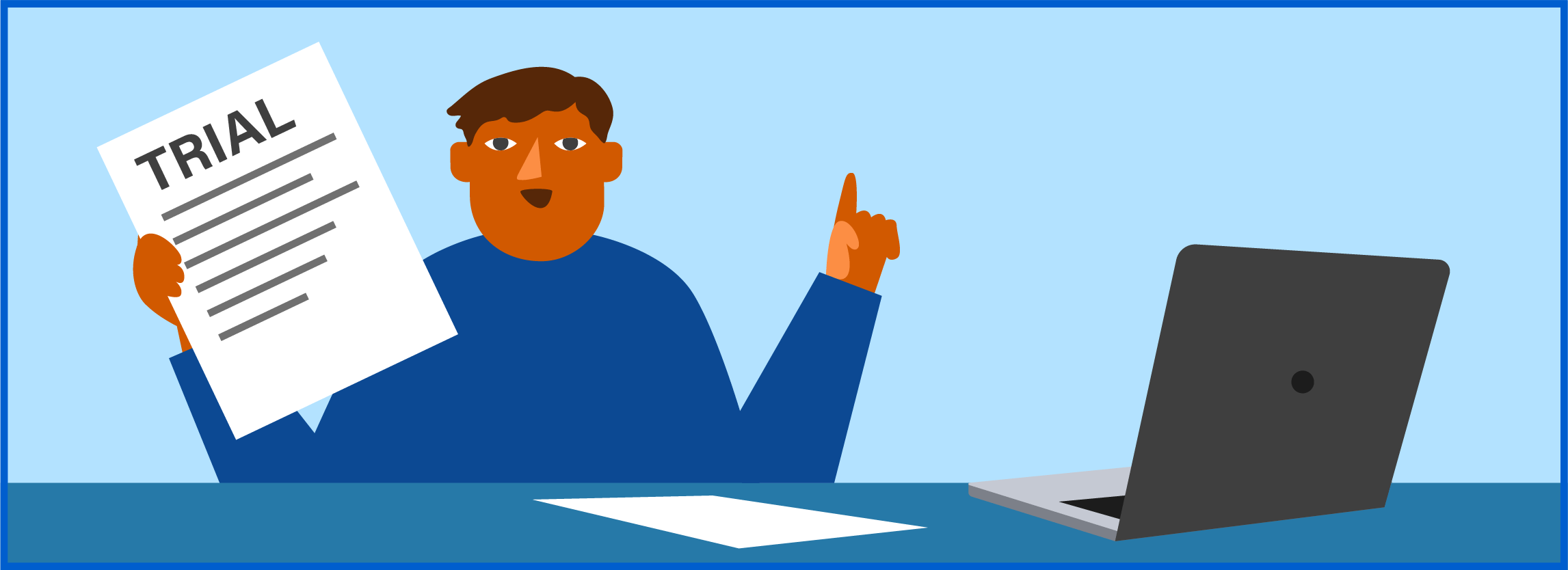
Here’s what you need to do if you choose this option:
- Request a trial by written declaration. First, contact your local court (the information should be on your ticket) and request a trial by written declaration. If you’re eligible, they’ll provide you with the necessary forms, which usually include a Request for Trial by Written Declaration (TR-205) and a Statement of Facts (TR-210 or TR-215).
- Prepare your statement. Provide a detailed, factual, and logical argument as to why you’re not guilty of the alleged violation. Write in the first person and be clear, concise, and to the point. If you have any evidence to support your claim, such as photographs or witness statements, make sure to reference them in your statement and attach them to your declaration.
- Submit your forms and pay bail. Fill out the forms completely. Be sure to include your citation number and other required information. Submit them to the court along with payment for the fines and fees associated with your ticket, also known as bail. This money will be refunded to you if you’re found not guilty.
- Wait for the verdict. Once the court receives your written declaration, a judge will review your case and make a decision. You’ll be notified by mail of the verdict.
If you’re found guilty via trial by written declaration, you can appeal the decision. Doing so will require you to physically appear in court at a later date.
Going to Traffic School for CVC 21950
Unless you have a valid reason to fight your ticket, your best bet is to plead guilty and sign up for traffic school. It’s a quick and easy way to mask one point from your record and keep your insurance premiums from increasing.
While you can attend traffic school in person, taking an online course is faster and more convenient. It also tends to be cheaper. Just make sure you choose a DMV-approved course, such as the one at Best Online Traffic School.
Our course is approved and licensed by the California DMV. It’s also one of the most affordable courses on the market, at just $27.99 with no hidden fees. Plus, you don’t have to pay until after you pass, so there’s no risk to you at all.
First, make sure you are eligible for traffic school. Eligibility criteria include:
- You hold a valid non-commercial driver’s license
- You haven’t taken a traffic school course in the last 18 months
- You’ve been charged with a one-point moving violation
- You were not under the influence of alcohol or drugs at the time of the offense
Commercial drivers are eligible for traffic school, too, but only if they committed the offense while operating a personal vehicle.
If you meet these requirements, double-check with the court and then admit your fault. Pay all fines and fees associated with your ticket, plus a court fee of $49 to $79 for traffic school.
After that, sign up for our online course and study at your own pace, from any device. Many of our students complete the course in two or three hours.
When you’re done, take the final exam from your computer, laptop, tablet, or smartphone. If you pass (99.9% of our students pass on the first try!), we’ll submit your certificate of completion to the court and DMV the same day so you can get that point off your record.
Getting a ticket doesn’t need to mean an increase in car insurance premiums. Start traffic school for FREE to get that point off your driving record.
Other California Vehicle Code Sections Related to Pedestrian Safety

The California Vehicle Code has several other sections on pedestrian safety. Failure to comply with these laws can add one point to your record and result in hefty fines.
- CVC 2195: Drivers may not overtake and pass other vehicles stopped at crosswalks to let pedestrians walk safely.
- CVC 21952: When driving over or upon a sidewalk, you must let any pedestrians on or near the sidewalk go first.
- CVC 21954: Pedestrians crossing the road outside of crosswalks must yield the right-of-way to close, oncoming vehicles. Drivers, on the other hand, should still exercise caution and prioritize pedestrians’ safety.
CVC 21955: This law prohibits pedestrians from jaywalking when there are traffic lights or police officers directing the traffic at intersections. It also states that the police cannot stop people from jaywalking unless they are at risk for a collision.
FAQs about 21950 CVC
Looking for more information? Here are the answers to some frequently asked questions about pedestrian traffic regulations.
Do I really have to wait until a pedestrian is completely through the crosswalk in California?
California law doesn’t require drivers to wait for pedestrians to exit the crosswalk and get on the sidewalk. However, you must slow down or stop until the pedestrian is out of your path.
What is the CVC code for a pedestrian impeding traffic?
Several sections of the California Vehicle Code, including CVC 21954, CVC 21950, and CVC 21955, forbid pedestrians from impeding the flow of traffic.
For example, CVC 21950 (b) states that pedestrians shall not unnecessarily stop or delay the traffic while on a crosswalk.
Who is considered a pedestrian in California?
Per the California Driver’s Handbook, a pedestrian is any individual who gets around by foot. This category also includes those using skateboards, roller skates, wheelchairs, motorized tricycles, or similar means of transportation. It does not include people riding bicycles or electric scooters.
Do pedestrians have the right-of-way in California?
Pedestrians have the right-of-way at crosswalks but not outside them. Those who are jaywalking must yield to oncoming vehicles that may constitute an immediate hazard.
Who has the right of way in an unmarked crosswalk in California?
In the Golden State, pedestrians always have the right-of-way at unmarked crosswalks.
What is the CVC for hitting a pedestrian?
If you hit a pedestrian while behind the wheel, you may be found guilty of violating CVC 21950. This can result in fines, demerit points, and, potentially, a personal injury lawsuit.
Getting a ticket is already a hassle, so make traffic school easy by choosing an affordable, convenient, online course — like Best Online Traffic School.
Our course is approved and licensed by the DMV in all of California’s counties. It’s also one of the most affordable courses on the market, at just $27.99 with no hidden fees. Plus, you don’t have to pay until after you pass, so there’s no risk to you at all.
Complete our course from anywhere, on your own devices, at your own pace. Many students complete the course in a single sitting, but you can also take your time. Once you pass your final exam and pay for the course, we’ll electronically submit your certificate of completion to your court so you can get that point off your record.
Getting a ticket doesn’t need to mean pricey insurance premium increases. Start traffic school today — for free — with Best Online Traffic School.














































